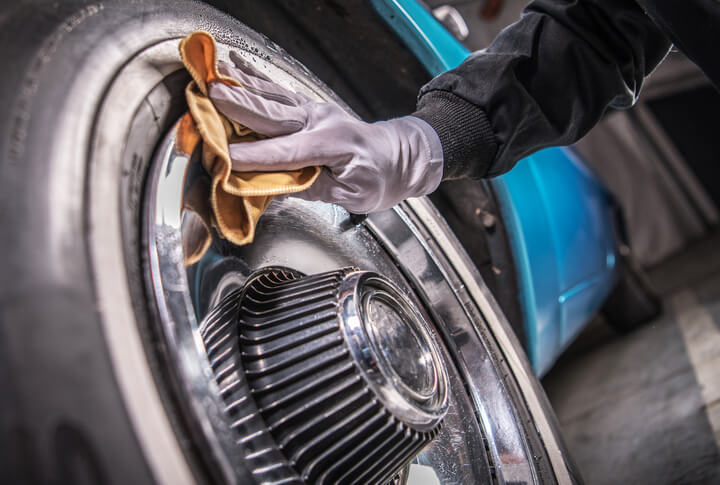A Guide to Vintage Car Maintenance for Auto Detailing Students
Maintaining a vintage car is a labour of love. It often requires a unique blend of patience, knowledge, and skill. For auto detailing training students, understanding the nuances of vintage car maintenance is crucial.
This guide provides essential tips and techniques to ensure these classic beauties remain pristine.
Understanding Vintage Cars in Auto Detailing Training
Vintage cars, generally manufactured between 1919 and 1930, possess distinct characteristics and materials that differ significantly from modern cars. This era includes iconic brands like Ford, Chevrolet, and Rolls-Royce, each with specific maintenance requirements.
The following sections will explore the key areas of vintage car maintenance, focusing on cleaning, preservation, and the unique challenges these vehicles present for auto detailing training students and professionals.
Exterior Care: Paint and Finish
Vintage cars often have single-stage paint finishes, which differ from the modern two-stage (base coat/clear coat) systems. Here are some tips for maintaining these finishes:
- Gentle Cleaning: Use a pH-balanced car shampoo and soft microfiber mitts to clean the surface without scratching the paint.
- Polishing: Since vintage paint can be thinner and more delicate, choose a mild polish and a soft applicator. Avoid abrasive compounds unless necessary.
- Waxing: Carnauba wax is ideal for vintage cars. It provides a protective layer while enhancing the natural shine of the paint.

Chrome and Metal Parts
Chrome and other metal components are prominent in vintage cars. Keeping them in top condition requires:
- Cleaning: Use a dedicated chrome cleaner or a mixture of vinegar and water. Avoid harsh chemicals that can damage the finish.
- Polishing: After cleaning, use a chrome polish to restore the shine and protect against rust.
- Protection: Apply wax or a protective sealant to keep metal parts looking their best.

Interior Care: Upholstery and Fabrics
The interiors of vintage cars often feature leather, fabric, and other materials that require special care:
- Leather: Clean with a pH-balanced leather cleaner, then condition with a quality leather conditioner to prevent cracking and drying.
- Fabric: Use a fabric cleaner appropriate for the material. Be gentle to avoid damaging delicate fibres.
- Wood Trim: Clean with a mild wood cleaner and polish with a product designed for vintage wood finishes.
Mechanical Maintenance: Engine and Transmission
The heart of any vintage car is its engine and transmission. Regular maintenance ensures longevity and performance:
- Oil Changes: Use the correct type of oil, typically a high-zinc content oil designed for older engines. Regular oil changes are crucial to prevent sludge buildup.
- Coolant System: Check the coolant regularly and replace it as needed. Vintage cars can be prone to overheating if the coolant system is not properly maintained.
- Transmission: Ensure the transmission fluid is at the correct level and replace it according to the manufacturer’s guidelines.
Electrical Systems: Knowledge of Older Systems
Vintage cars often have simpler, yet more fragile electrical systems compared to modern vehicles:
Battery Maintenance: Keep the battery terminals clean and the battery properly charged. Use a trickle charger if the car is not driven regularly.
Wiring: Inspect the wiring for any signs of wear or corrosion. Replace any damaged wires to prevent electrical issues.
Lighting: Check all lights regularly and replace bulbs as needed. Clean the lenses to ensure optimal visibility.
Storage and Preservation
You’ll discover in auto detailing that proper storage is vital for preserving a vintage car:
- Climate Control: Store the car in a climate-controlled environment to prevent rust and deterioration of materials.
- Cover: Use a high-quality car cover to protect the vehicle from dust, moisture, and sunlight.
- Regular Checkups: Even when not in use, perform regular checkups to ensure the car remains in good condition.
Are you looking for an automotive school?
Contact ATC Surrey for more information.


